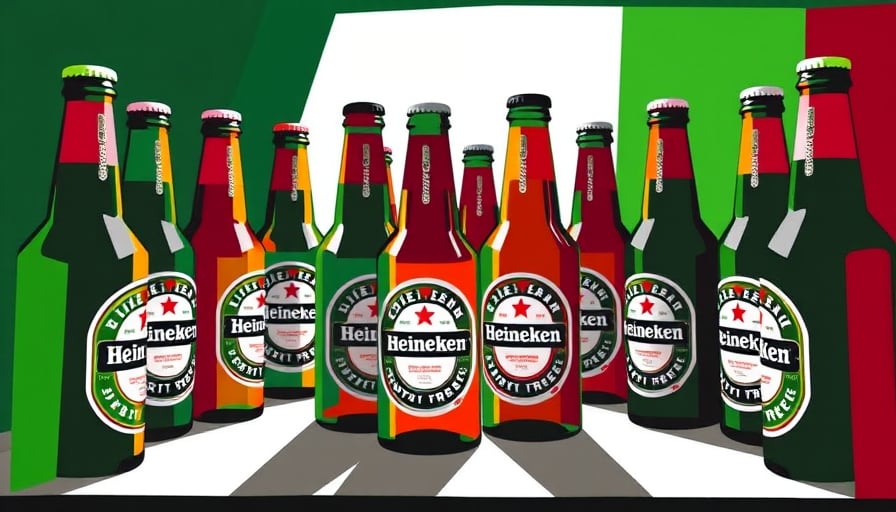Corporate Update: Heineken NV Navigates a Short‑Term Sales Dip Amid Macro‑Catalysts
Heineken NV, the Dutch brewer that commands a significant share of the global beer market, is confronting a modest but measurable downturn in sales volumes as a result of an impending 10 % hike in excise duty on alcoholic beverages. The duty increase is projected to elevate the overall cost base by roughly 5.8 % to 6.0 %. Industry analysts anticipate that beer manufacturers, including Heineken, will largely pass these cost pressures on to end‑customers, producing a short‑term sales decline of approximately 5.5 % to 5.7 %. Nonetheless, the consensus view is that the contraction is transitory, with sales expected to rebound once consumers acclimate to the new price point.
Macro‑Catalysts Mitigating the Impact
Two macro‑economic drivers are poised to cushion the negative trajectory:
Malaysia Tourism Year (2026) – The Malaysian government has set a target of attracting 47 million tourists in 2026, an increase from 43 million in 2025. Heineken’s portfolio includes brands that are heavily consumed in the region, and the surge in inbound tourism is expected to translate into elevated beer consumption. Historical data from previous tourism booms in Southeast Asia corroborate a correlation between increased footfall and higher beverage sales.
FIFA World Cup 2026 – Major sporting events have long been a proven catalyst for beer sales. Analyses of past World Cup periods reveal substantial upticks in consumption, driven by heightened fan engagement and celebratory purchasing patterns. The 2026 tournament, set to be hosted by the United States, Mexico, and Canada, is anticipated to generate a similar surge, especially in the North American and Mexican markets where Heineken maintains a robust distribution network.
Together, these factors are expected to offset the price‑induced decline, creating a net neutral or even positive impact on revenue in the near term.
Cross‑Sector Insights: Consumer Goods, Retail Innovation, and Brand Positioning
| Sector | Observed Trend | Implication for Heineken |
|---|---|---|
| Consumer Packaged Goods (CPG) | Shift toward experiential and premium offerings | Heineken’s “Premium Lager” line aligns with rising consumer willingness to pay for perceived quality. |
| Retail & E‑Commerce | Accelerated omnichannel adoption | Heineken’s partnership with major e‑commerce platforms (e.g., Amazon, Flipkart) and in‑store digital kiosks facilitates seamless purchase paths. |
| Supply Chain | Emphasis on sustainability and resilience | Transition to low‑carbon logistics and diversified sourcing reduces exposure to volatile freight costs, critical amid excise duty hikes. |
Omnichannel Retail Strategies
Heineken’s omnichannel blueprint integrates traditional on‑premise channels with digital storefronts, leveraging data analytics to personalize marketing and optimize inventory across both physical and virtual touchpoints. The company’s recent rollout of a mobile‑first ordering app in key markets exemplifies this approach, driving both convenience for consumers and actionable insights for supply chain management.
Consumer Behaviour Shifts
Recent surveys indicate a pronounced shift toward “brand experience” over “price sensitivity” among millennials and Gen‑Z consumers. Heineken’s investment in experiential marketing—such as branded pop‑up bars, augmented reality campaigns, and collaboration with local festivals—capitalizes on this trend, fostering brand loyalty that transcends short‑term price fluctuations.
Supply Chain Innovations
Heineken has accelerated the deployment of blockchain‑enabled traceability across its brewing and distribution network, improving transparency and reducing lead times. These innovations are pivotal in absorbing cost increases from excise duty, as they streamline operations and mitigate bottlenecks that could otherwise amplify price sensitivity.
Short‑Term Market Movements and Long‑Term Transformation
| Time Horizon | Key Driver | Projected Impact |
|---|---|---|
| Next 3 Months | Excise duty increase | Temporary sales dip (~5.5 %–5.7 %) |
| 6–12 Months | Tourism Year launch | Stabilization and modest growth in Asia‑Pacific markets |
| 1–3 Years | World Cup and continued digital expansion | Consolidation of premium positioning and market share gains |
The short‑term dip, while noticeable, is expected to be absorbed by the company’s robust financial buffers and strategic initiatives. Over the long haul, Heineken is well‑positioned to benefit from sustained consumer shifts toward premium, experience‑driven consumption, as well as from its integrated omnichannel framework that mitigates market volatility.
Analyst Outlook
Given the confluence of supportive macro‑drivers, innovative retail strategies, and resilient supply chain capabilities, analysts maintain a “buy” recommendation for Heineken NV. The company’s stock is projected to benefit from the recovery trajectory, with an anticipated rebound in sales volumes as the market adjusts to the new excise regime and as tourism and sporting events invigorate demand.
In sum, Heineken’s proactive alignment with evolving consumer preferences, coupled with its commitment to operational excellence, positions it to navigate the present headwinds and emerge stronger in the dynamic global beer landscape.
